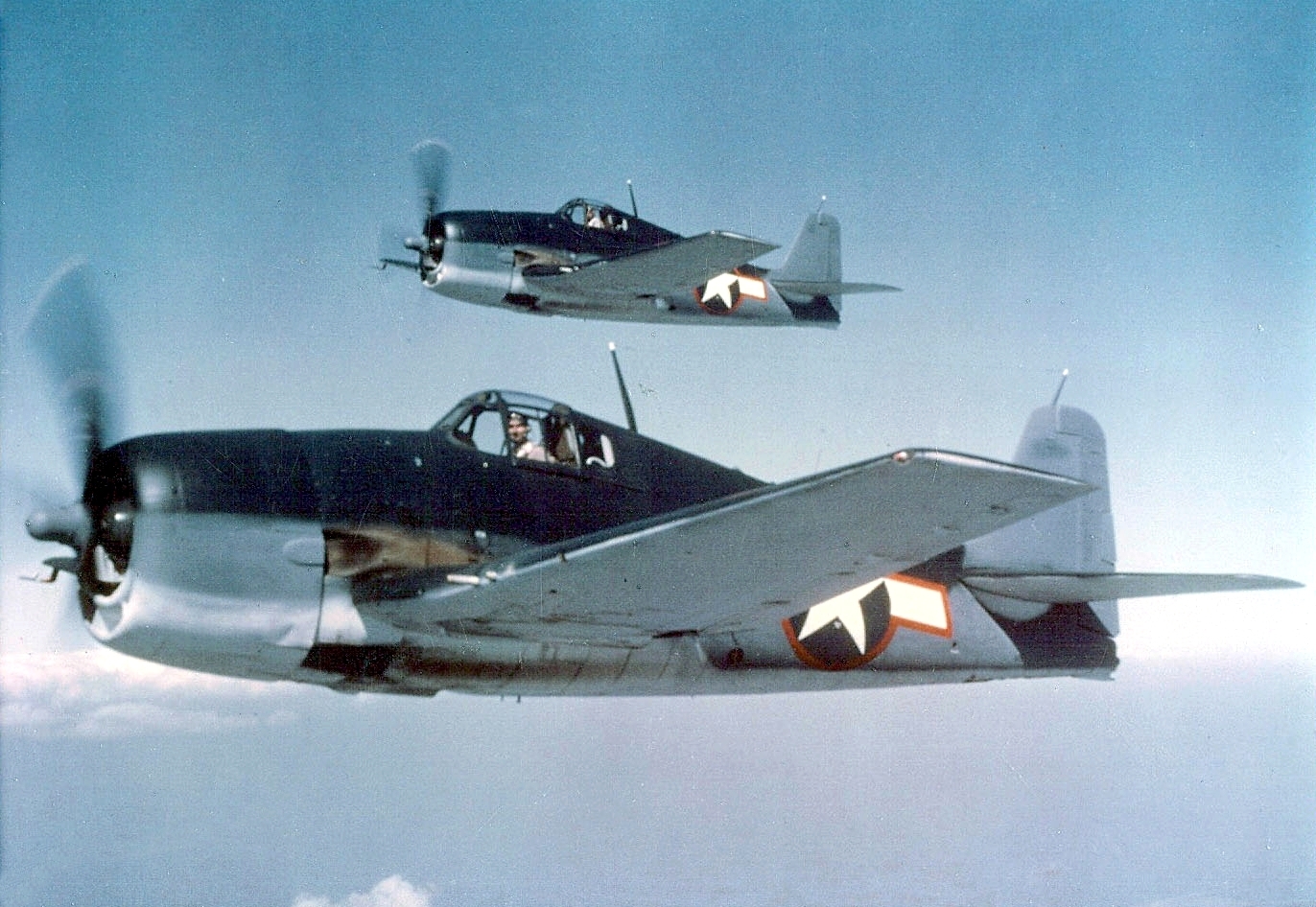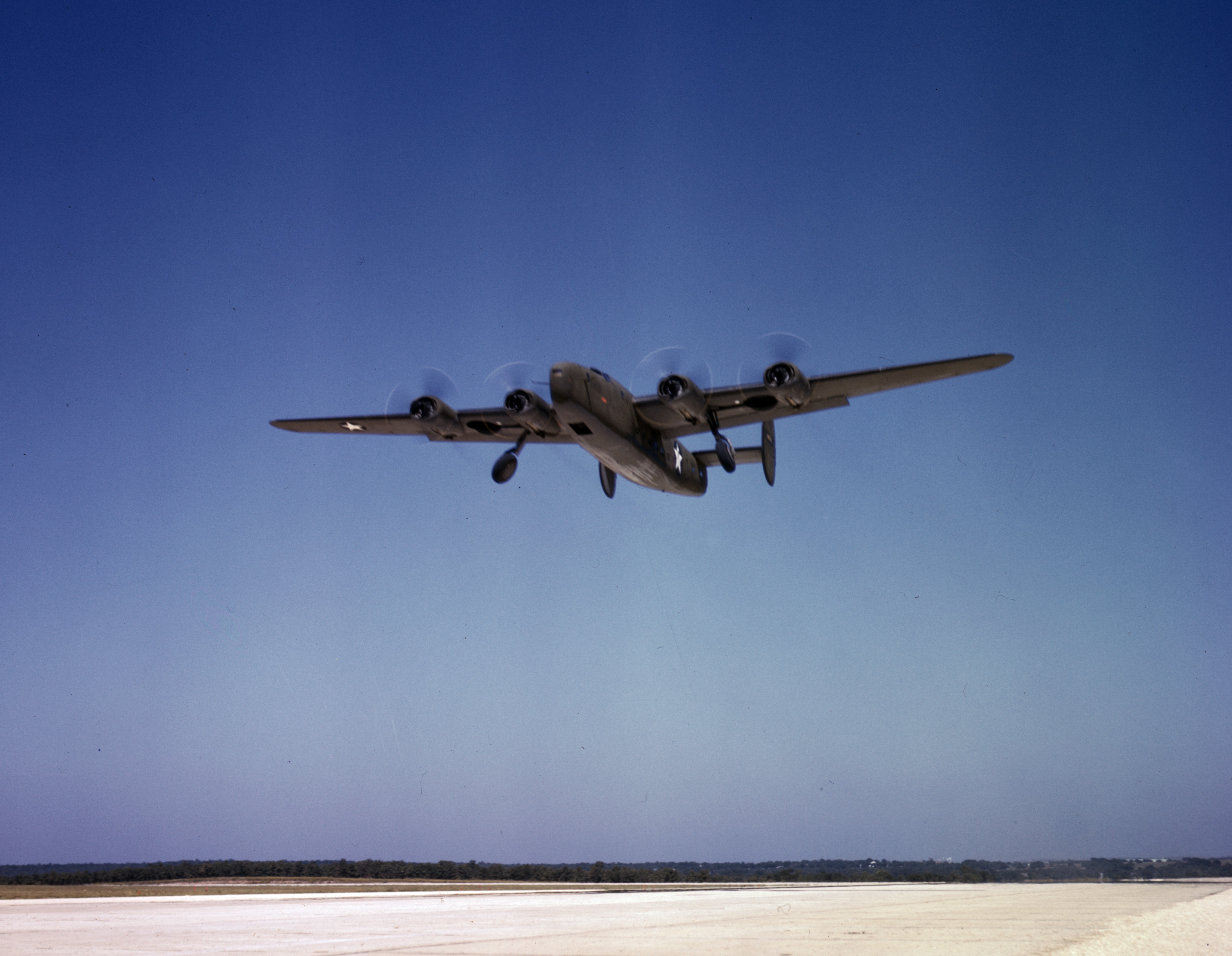|
Consolidated R2Y
The Consolidated R2Y "Liberator Liner" (Consolidated Model 39) was an airliner derivative of the B-24 Liberator built for the United States Navy by Consolidated Aircraft. Development and service The XR2Y-1, as the single prototype was known in Navy service, used the high-aspect wing and tricycle landing gear of the Liberator. The fuselage was an entirely new design, and the vertical stabilizer was taken from the PB4Y Privateer. The final design looked much like a smaller, high-wing Boeing B-29 Superfortress, but with windows for passengers. The aircraft was meant to carry passengers or cargo to distant Navy bases, but after a brief evaluation the prototype was demilitarized in the mid-1940s, returned to Convair, and leased to American Airlines as a freighter with the name "City of Salinas". Specifications (R2Y-1) See also References External links NX30039 American Airlines {{Consolidated aircraft Consolidated R2Y The Consolidated R2Y "Liberator Liner" (Consol ... [...More Info...] [...Related Items...] OR: [Wikipedia] [Google] [Baidu] |
WikiProject Aircraft
A WikiProject, or Wikiproject, is a Wikimedia movement affinity group for contributors with shared goals. WikiProjects are prevalent within the largest wiki, Wikipedia, and exist to varying degrees within sister projects such as Wiktionary, Wikiquote, Wikidata, and Wikisource. They also exist in different languages, and translation of articles is a form of their collaboration. During the COVID-19 pandemic, CBS News noted the role of Wikipedia's WikiProject Medicine in maintaining the accuracy of articles related to the disease. Another WikiProject that has drawn attention is WikiProject Women Scientists, which was profiled by '' Smithsonian'' for its efforts to improve coverage of women scientists which the profile noted had "helped increase the number of female scientists on Wikipedia from around 1,600 to over 5,000". On Wikipedia Some Wikipedia WikiProjects are substantial enough to engage in cooperative activities with outside organizations relevant to the field at issue. For e ... [...More Info...] [...Related Items...] OR: [Wikipedia] [Google] [Baidu] |
Boeing B-29 Superfortress
The Boeing B-29 Superfortress is an American four-engined propeller-driven heavy bomber, designed by Boeing and flown primarily by the United States during World War II and the Korean War. Named in allusion to its predecessor, the B-17 Flying Fortress, the Superfortress was designed for high-altitude strategic bombing, but also excelled in low-altitude night incendiary bombing, and in dropping naval mines to blockade Japan. B-29s dropped the atomic bombs on Hiroshima and Nagasaki, the only aircraft ever to drop nuclear weapons in combat. One of the largest aircraft of World War II, the B-29 was designed with state-of-the-art technology, which included a pressurized cabin, dual-wheeled tricycle landing gear, and an analog computer-controlled fire-control system that allowed one gunner and a fire-control officer to direct four remote machine gun turrets. The $3 billion cost of design and production (equivalent to $ billion today), far exceeding the $1.9 b ... [...More Info...] [...Related Items...] OR: [Wikipedia] [Google] [Baidu] |
Aircraft First Flown In 1944
An aircraft is a vehicle that is able to fly by gaining support from the air. It counters the force of gravity by using either static lift or by using the dynamic lift of an airfoil, or in a few cases the downward thrust from jet engines. Common examples of aircraft include airplanes, helicopters, airships (including blimps), gliders, paramotors, and hot air balloons. The human activity that surrounds aircraft is called ''aviation''. The science of aviation, including designing and building aircraft, is called ''aeronautics.'' Crewed aircraft are flown by an onboard pilot, but unmanned aerial vehicles may be remotely controlled or self-controlled by onboard computers. Aircraft may be classified by different criteria, such as lift type, aircraft propulsion, usage and others. History Flying model craft and stories of manned flight go back many centuries; however, the first manned ascent — and safe descent — in modern times took place by larger hot-air ball ... [...More Info...] [...Related Items...] OR: [Wikipedia] [Google] [Baidu] |
High-wing Aircraft
A monoplane is a fixed-wing aircraft configuration with a single mainplane, in contrast to a biplane or other types of multiplane (aeronautics), multiplanes, which have multiple planes. A monoplane has inherently the highest efficiency and lowest drag of any wing configuration and is the simplest to build. However, during the early years of flight, these advantages were offset by its greater weight and lower manoeuvrability, making it relatively rare until the 1930s. Since then, the monoplane has been the most common form for a fixed-wing aircraft. Characteristics Support and weight The inherent efficiency of the monoplane is best achieved in the cantilever wing, which carries all structural forces internally. However, to fly at practical speeds the wing must be made thin, which requires a heavy structure to make it strong and stiff enough. External Bracing (aeronautics), bracing can be used to improve structural efficiency, reducing weight and cost. For a wing of a given size, ... [...More Info...] [...Related Items...] OR: [Wikipedia] [Google] [Baidu] |
Consolidated Aircraft
The Consolidated Aircraft Corporation was founded in 1923 in aviation, 1923 by Reuben H. Fleet in Buffalo, New York, the result of the Gallaudet Aircraft Company's liquidation and Fleet's purchase of designs from the Dayton-Wright Company as the subsidiary was being closed by its parent corporation, General Motors.Yenne 2009, p. 15. Consolidated became famous, during the 1920s and 1930s, for its line of flying boats. The most successful of the Consolidated patrol boats was the PBY Catalina, which was produced throughout World War II and used extensively by the Allies. Equally famous was the B-24 Liberator, a heavy bomber which, like the Catalina, saw action in both the Asiatic-Pacific Theater, Pacific and European Theater of Operations, European theaters. In 1943 in aviation, 1943, Consolidated merged with Vultee Aircraft to form Consolidated-Vultee Aircraft, later known as Convair. History Consolidated Aircraft (and later Convair) had their headquarters in San Diego, California, ... [...More Info...] [...Related Items...] OR: [Wikipedia] [Google] [Baidu] |
1940s United States Military Transport Aircraft
Year 194 ( CXCIV) was a common year starting on Tuesday (link will display the full calendar) of the Julian calendar. At the time, it was known as the Year of the Consulship of Septimius and Septimius (or, less frequently, year 947 ''Ab urbe condita''). The denomination 194 for this year has been used since the early medieval period, when the Anno Domini calendar era became the prevalent method in Europe for naming years. Events By place Roman Empire * Emperor Septimius Severus and Decimus Clodius Septimius Albinus Caesar become Roman Consuls. * Battle of Issus: Septimius Severus marches with his army (12 legions) to Cilicia, and defeats Pescennius Niger, Roman governor of Syria. Pescennius retreats to Antioch, and is executed by Severus' troops. * Septimius Severus besieges Byzantium (194–196); the city walls suffer extensive damage. Asia * Battle of Yan Province: Warlords Cao Cao and Lü Bu fight for control over Yan Province; the battle lasts for over 100 days ... [...More Info...] [...Related Items...] OR: [Wikipedia] [Google] [Baidu] |
List Of United States Navy Aircraft Designations (pre-1962)
This list of United States Navy aircraft designations (pre-1962) includes prototype, pre-production and operational type designations under the 1922 United States Navy aircraft designation system, which was used by the United States Navy, the United States Marine Corps, and the United States Coast Guard. The list also includes airships, which were designated under different systems than fixed-wing aircraft and rotorcraft until 1954, and naval aircraft that received designations under the 1911 and 1914 U.S. Navy systems, which were sequential by manufacturer and/or aircraft class, and did not convey information about the aircraft's mission. For aircraft designations under the U.S. Army Air Force/U.S. Air Force system or the post-1962 Tri-Service system—which includes U.S. Navy, Marine Corps and Coast Guard aircraft currently in service—see List of military aircraft of the United States. For Navy, Marine Corps and Coast Guard aircraft that did not receive formal designations� ... [...More Info...] [...Related Items...] OR: [Wikipedia] [Google] [Baidu] |
Boeing 377 Stratocruiser
The Boeing 377 Stratocruiser was a large long-range airliner developed from the C-97 Stratofreighter military transport, itself a derivative of the B-29 Superfortress. The Stratocruiser's first flight was on July 8, 1947. Its design was advanced for its day; its innovative features included two passenger decks and a pressurized cabin. It could carry up to 100 passengers on the main deck plus 14 in the lower deck lounge; typical seating was for 63 or 84 passengers or 28 berthed and five seated passengers. The Stratocruiser was larger than the Douglas DC-6 and Lockheed Constellation and cost more to buy and operate. Its reliability was poor, chiefly due to problems with the four 28-cylinder Pratt & Whitney R-4360 Wasp Major radial engines and structural and control problems with their propellers. Only 55 Model 377s were built for airlines, along with the single prototype. The 377 was also converted into the Aero Spacelines Pregnant Guppy by John M. Conroy for NASA’s Gemini sp ... [...More Info...] [...Related Items...] OR: [Wikipedia] [Google] [Baidu] |
Boeing 307 Stratoliner
The Boeing Model 307 Stratoliner (or Strato-Clipper in Pan American service, or C-75 in USAAF service) is an American stressed-skin four-engine low-wing tailwheel monoplane airliner derived from the B-17 Flying Fortress bomber, which entered commercial service in July 1940. It was the first airliner in revenue service with a pressurized cabin, which with supercharged engines, allowed it to cruise above the weather. As such it represented a major advance over contemporaries, with a cruising speed of at compared to the Douglas DC-3s , at then in service.Davies, 2000, p.52 When it entered commercial service it had to have a crew of five to six, including two pilots, a flight engineer, two flight attendants and an optional navigator, and had a capacity for 33 passengers, which later modifications increased, first to 38, and eventually to 60. Development In 1935, Pan American Airways, United Airlines, American Airlines, Eastern Air Lines and Transcontinental & Western Air (T&WA ... [...More Info...] [...Related Items...] OR: [Wikipedia] [Google] [Baidu] |
Consolidated C-87 Liberator Express
The Consolidated C-87 Liberator Express was a transport derivative of the B-24 Liberator heavy bomber built during World War II for the United States Army Air Forces. A total of 287 C-87s were officially delivered from Consolidated Aircraft plant in Fort Worth, Texas. The plant also developed and delivered a USAAF flight engineer trainer designated as the AT-22. The AAF C-87A was an executive transport version of the C-87. The United States Navy VIP transport designated as the RY. The last development was a Navy contracted, single tail version with an extended fuselage. Built in San Diego, its USN designation was RY-3 and the AAF had order the design as the C-87C. Those were cancelled and allotted to a Royal Air Force VIP transport designated as the Liberator C.IX In contrast, the C-109 Liberator was a fuel-transport converted from existing B-24 Bombers.https://web.archive.org/web/20090304014706/http://home.att.net/~jbaugher2/b24_27.html Consolidated C-109 Design and develo ... [...More Info...] [...Related Items...] OR: [Wikipedia] [Google] [Baidu] |
Radial Engine
The radial engine is a reciprocating type internal combustion engine configuration in which the cylinders "radiate" outward from a central crankcase like the spokes of a wheel. It resembles a stylized star when viewed from the front, and is called a "star engine" in some other languages. The radial configuration was commonly used for aircraft engines before gas turbine engines became predominant. Engine operation Since the axes of the cylinders are coplanar, the connecting rods cannot all be directly attached to the crankshaft unless mechanically complex forked connecting rods are used, none of which have been successful. Instead, the pistons are connected to the crankshaft with a master-and-articulating-rod assembly. One piston, the uppermost one in the animation, has a master rod with a direct attachment to the crankshaft. The remaining pistons pin their connecting rods' attachments to rings around the edge of the master rod. Extra "rows" of radial cylinders can be added i ... [...More Info...] [...Related Items...] OR: [Wikipedia] [Google] [Baidu] |



.jpg)




